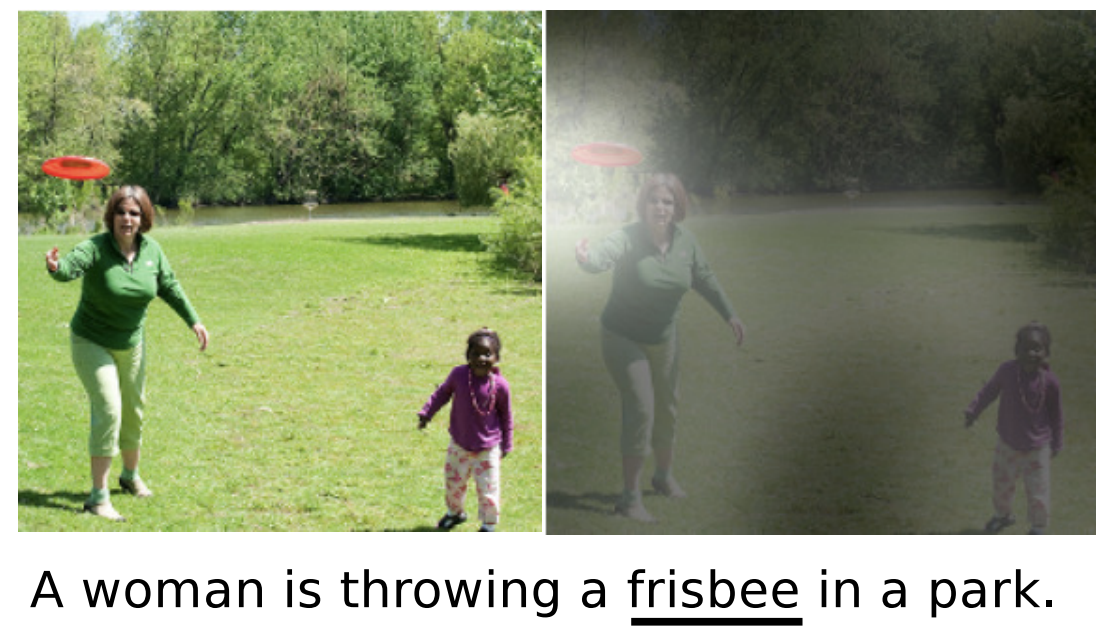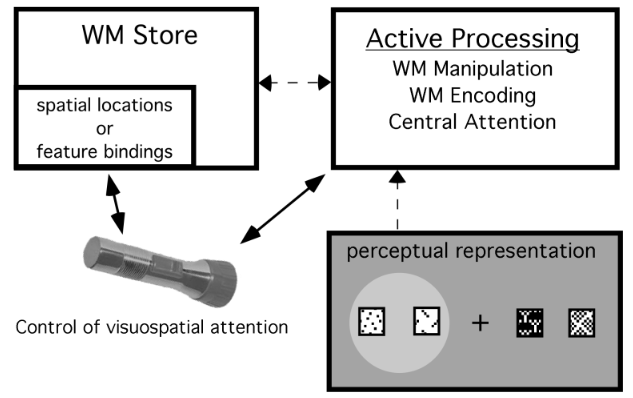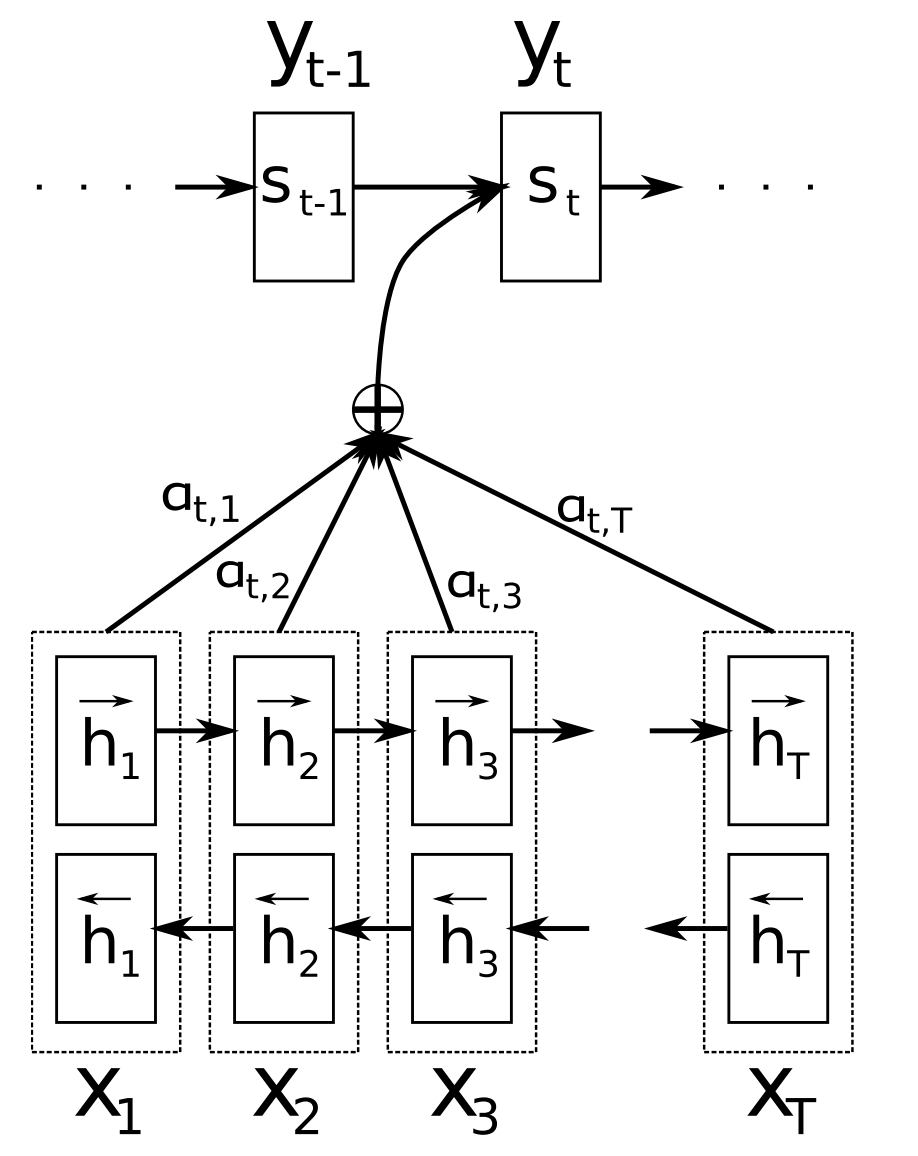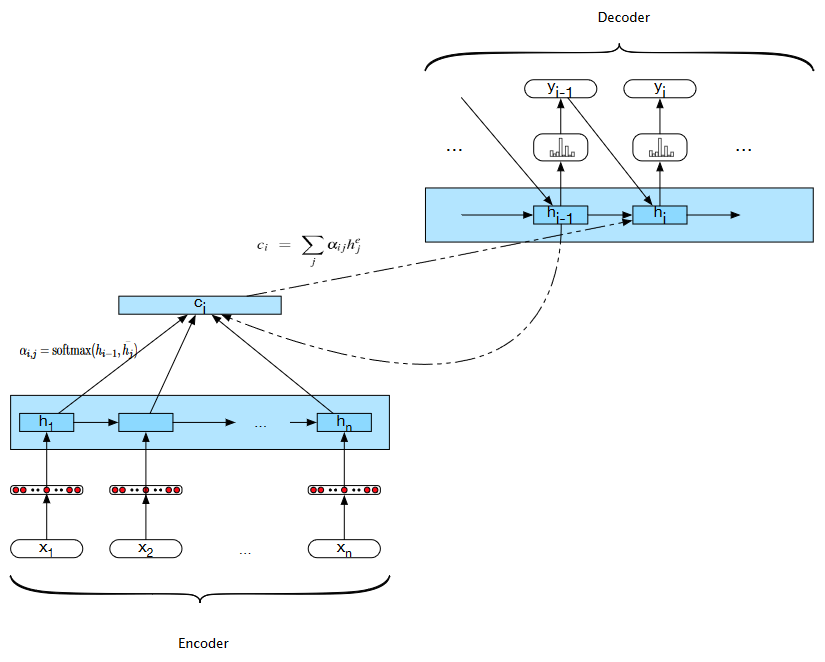Unstructured Data & Natural Language Processing
Keith Dillon
Spring 2020

Topic 11: Attention
This topic:¶
- Attention & Memory
- Encoder-decoder RNNs with attention
- Transformer networks
Reading:¶
- J&M Chapter 10 (Encoder-Decoder Models, Attention, and Contextual Embeddings)
- Young et al, "Recent trends in deep learning based natural language processing" 2018
- Sebastian Ruder, "A Review of the Neural History of Natural Language Processing" 2018
- Vaswani et al, "Attention Is All You Need" (Transformer networks) 2017
- Devlin et al, "BERT: Pre-training of Deep Bidirectional Transformers for Language Understanding", 2018
I. Attention & Memory¶
Attention¶
"the key idea that enabled NMT models to outperform classic phrase-based MT systems"
Xu et al 2015, "Show, Attend and Tell: Neural Image Caption Generation with Visual Attention"

Memory-based Networks¶
Reading from memory - output memory state most similar to input state
Writing to memory - creating readable states
- Neural Turing Machines (Graves et al., 2014)
- Memory Networks (Weston et al., 2015)
- End-to-end Memory Newtorks (Sukhbaatar et al., 2015)
- Dynamic Memory Networks (Kumar et al., 2015)
- Neural Differentiable Computer (Graves et al., 2016)
- Recurrent Entity Network (Henaff et al., 2017)
Attention - Cognitive science perspective¶
- Prior knowledge is used in processing a scene
- Important details receive more focus
- Effect is seen at lowest levels of vision

Fougnie 2008, "The Relationship between Attention and Working Memory"
Attention - network implementation¶
Weighted linear combination(s) of encoded input
Bahdanau et al 2015, "Neural Machine Translation by Jointly Learning to Align and Translate"

II. RNNs with Attention¶
Attention¶
- More sophisticated context mechanism
- Replace the static context vector with one that is dynamically derived from the encoder hidden states at each point during decoding (i.e. a function of encoder outputs)
- Pass as input to decoding at each sequence step
Step 1. compute a score that measures how important encoder hidden states are to decoder hidden states,
Dot product $$ score(\mathbf h_{i-1}^{(d)}, \mathbf h_j^{(e)}) = \mathbf h_{i-1}^{(d)}\cdot \mathbf h_j^{(e)} $$
Weighted dot product $$ score(\mathbf h_{i-1}^{(d)}, \mathbf h_j^{(e)}) = (\mathbf h_{i-1}^{(d)})^T \mathbf W_s \mathbf h_j^{(e)} $$
Get one number for each prior state decoder $j$, relating to current ($i$th) decoder state.
Step 2. Use softmax over scores to normalize over the decoder states
\begin{align} \alpha_{ij} &= softmax(score(\mathbf h_{i-1}^{(d)}, \mathbf h_j^{(e)})) \\ &= \frac{\exp(score(\mathbf h_{i-1}^{(d)}, \mathbf h_j^{(e)}))}{\sum_k\exp(score(\mathbf h_{i-1}^{(d)}, \mathbf h_k^{(e)}))} \end{align}Context vector = linear combination of encoder state vectors, weighted by normalized scores
$$ \mathbf c_i = \sum_j \alpha_{ij} \mathbf h_j^{(e)} $$
Encoder-decoder network with attention. Computing the value for $\mathbf h_i$ is based on the previous hidden state, the previous word generated, and the current context vector $\mathbf c_i$. This context vector is derived from the attention computation based on comparing the previous hidden state to all of the encoder hidden states.
III. Transformer Networks¶
Recall: Sequence Optimality Problem¶
- Greedily choosing decoder outputs -- at any step in sequence can pick most likely individual output -- may produce a sequence of most-likely outputs may not be very likely at all (e.g. "the the the")
- Want way of preferentially getting likely sequences, as done with Markov models
- Dynamic programming tricks to make this practical (like Viterbi decoding) can't be easily done here due to recurrent feedback of chosen outputs -- output distributions vary depending on prior sequence
IV. BERT¶